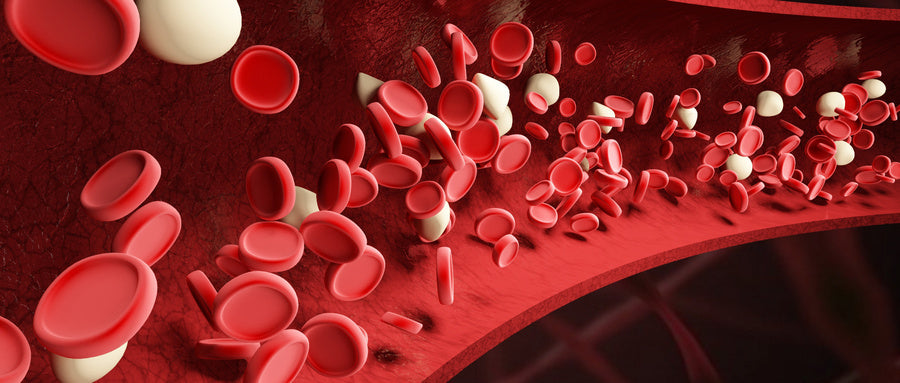Among various indicators of blood sugar control for people with diabetes, glycated hemoglobin (glycation value for short) has always been positioned as the "gold standard" for evaluating blood sugar control and is an important reference for doctors to make final prescriptions. What should you do when you face an elevated glycosylated hemoglobin value?
What is the reason for the high glycation value?
When using glycation values to evaluate self-blood sugar control, two interesting phenomena have emerged:
Diabetes A’s self-tested fasting blood sugar for 3 months was around 6.0mmol/L. The hospital’s test report showed that the glycated hemoglobin value was 7.3%. Diabetes A said: It’s impossible for my glycated hemoglobin value to be so high?
The glycated hemoglobin test in the hospital for Diabetes B patient was 7.2%. Over the past three months, the fasting blood sugar self-measured was mostly around 6.0mmol/L, and the postprandial blood sugar was around 8.0mmol/L. Diabetes B patient said: My glycated hemoglobin value cannot be like this. high? (Note: The glycation value for diabetic patients should be less than 7.0%.)
Everyone says that their glycosylated hemoglobin value cannot be that high. Who is right? Let’s analyze it together.
First, the size of the glycation value is determined by the combination of fasting and postprandial blood sugar.
Second, it is not comprehensive for Diabetes A to judge that their glycation level should not be so high based only on self-tested fasting blood glucose levels. Sure enough, his self-tested postprandial blood sugar level reached 12.5 mmol/L. When the glycation value is equal to or less than 7.3%, the contribution rate of postprandial blood sugar is 70%. Therefore, the glycation value of Diabetes A is greatly affected by postprandial blood sugar. When the glycation value is 7.3%, the corresponding average blood sugar value is about 9.4 mmol/L. Based on the fasting, postprandial and average blood sugar values of Diabetes A, it can be determined that the glycation value of 7.3 mmol/L is basically accurate.
Third, the fasting and postprandial blood sugars of people with type B diabetes are both ideal. Based on the self-measured fasting and postprandial blood sugar values, the average blood sugar value should be approximately 7.0 mmol/L, and the glycation value corresponding to this average blood sugar value should be calculated. is 6.0%. Therefore, Diabetes B needs to recheck his glycation value.
From this, we have further unified our understanding. When we get the hospital test report, we should make correct associations based on the "gold standard" of glycation value, so that we can make accurate judgments about our blood sugar control and better adjust our diet and exercise. and drugs, making the three methods of sugar control more coordinated and reasonable.
Glycation 7.0%, normal?
Glycated hemoglobin corresponds to the average blood sugar. If blood sugar fluctuates greatly, and hyperglycemia and hypoglycemia occur alternately, glycated hemoglobin may also be normal. Therefore, when your glycation value is normal, you need to consider the following 4 factors.
First, the corresponding average blood sugar value when the glycation value is 7.0% is 8.6 mmol/L. We need to check our daily blood sugar monitoring records, focusing on the average fasting blood sugar in the past 3 months (because fasting blood sugar has more influencing factors than postprandial blood sugar). less, relatively stable), if the average value is about 6.0 mmol/L, it is estimated based on the average blood sugar value of 8.6 mmol/L that the postprandial blood sugar is at least about 10.0 mmol/L. If the self-measured postprandial blood sugar value is about 10.0 mmol/L , which is normal.
Second, it is necessary to calculate whether the blood sugar fluctuation is ideal. When the "glycation value" is 7.0%, the ideal value of the standard deviation of blood sugar fluctuation is one-third of the average blood sugar (8.6mmol/L), but no more than one-half, three One-half is 2.9mmol/L, and one-half is 4.3mmol/L. Blood sugar exceeding this limit means blood sugar fluctuates greatly, which is also not conducive to disease control.
Third, according to when the "glycation value" is less than 7.3%, the contribution rate of postprandial blood sugar to the "glycation value" is 70%, so we should focus on controlling postprandial blood sugar to achieve ideal blood sugar fluctuations.
Fourth, eliminate and adjust one by one according to the order of diet, exercise, and medicine, so that blood sugar can fully reach the standard. Diabetes lovers use glycation values to make positive, correct and effective associations with their own blood sugar control on a regular basis. Not only can they correctly evaluate their own blood sugar control levels and summarize their own experience or lessons in sugar control practice, but they can also have a clear understanding of the "five carriages". You will become more skillful in controlling it and truly become a master of diabetes self-management. And this ability will definitely benefit your own health and your family.

